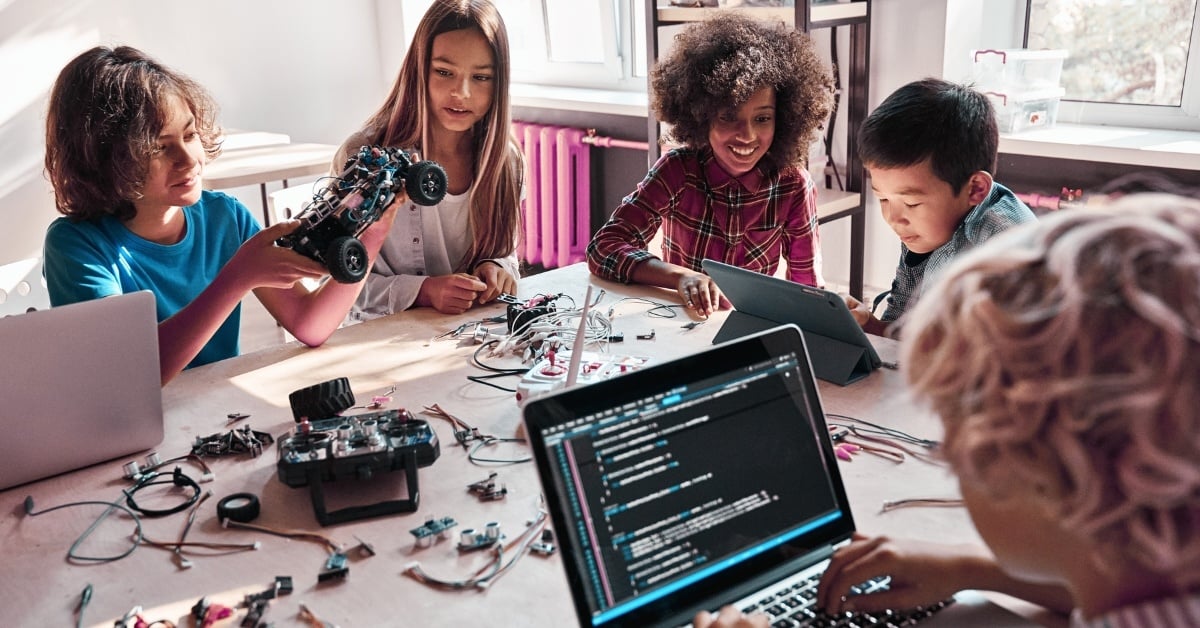
Sep 5, 2024 12:39:13 PM
by Carly Daff
It’s hard to believe we’re starting a second full school year with generative artificial intelligence (AI) in classrooms. From the start, there was a mix of excitement and nervousness about these new tools. It was clear that they had the potential to transform teaching and learning, but new technology often takes time to truly shine.
Canva was one of the first education platforms to offer free AI tools to classrooms, and we’re now empowering more than 70 million students and teachers worldwide with these tools. After a year of observing AI’s role in classrooms, we’re excited to share what we’ve learned.
When AI first became available, there was understandable concern and fear.
We took these concerns very seriously, and in addition to Canva Shield, our collection of robust trust, safety, and privacy tools, we also gave school districts the ability to turn AI features on or off at any time easily.
We were absolutely thrilled to see that many districts jumped in with enthusiasm when it came to these tools. One full school year in, almost all districts using Canva have turned on Magic Media, one of our education communities’ favorite tools for creativity. Our student usage of AI tools has also doubled, and teacher usage has increased by 50%.
Our new research found that creativity is becoming more critical than ever in education and the workforce – and it seems that districts see AI as a way to foster creativity.
One of the best parts of my job is witnessing our incredible, innovative educators in action. They’re continuously finding innovative uses for AI that I never could have imagined. Our teachers are truly irreplaceable.
For instance, one teacher started an after-school AI club to encourage students to embrace AI and bring their imaginations to life with generated designs. Another developed and led a creative studio camp for middle school students focused on creating compelling animations.
I always believed AI could ease teachers’ workloads and help with burnout, but these creative solutions were beyond what I expected. It’s incredibly inspiring.
When AI first started to come on the scene, some feared that it might make the role of an educator obsolete. If you can plan lessons and create designs with a few keystrokes, what does that mean for teachers’ expertise?
We’ve found that the more of your voice and creativity you include as a starting point, the better the results are. In other words, AI works best when you use it to help realize your creativity and vision – but it can’t create that spark for you.
I find this incredibly reassuring. While AI can help save time, make designs more accessible, and increase engagement, it can’t replace the unique spark of human creativity.
As AI becomes more embedded in education, it will be more important than ever to hone and nurture students’ creativity.
AI tools are still evolving, and there is so much more to learn. Over the coming months and years, AI will improve and be able to do more than it can today. However, these early learnings are extremely promising. AI is here to stay and is already transforming classrooms and revolutionizing teaching and learning.
We couldn’t be more excited about the journey ahead.
Few issues in education spark more tension and debate than standardized testing. Are they a tool for equity or a burden on students? A necessary check on school systems or a flawed measure of...
Charter schools are public schools with a purpose. Operating independently from traditional school districts, they're tuition-free, open to all students, and publicly funded—but with more flexibility...
Despite the benefits of a diverse teaching force, prospective teachers of color fall out of our leaky preparation pipeline at every stage: preparation, hiring, induction, and retention. Here’s what...
Ed Post is the flagship website platform of brightbeam, a 501(c3) network of education activists and influencers demanding a better education and a brighter future for every child.
© 2020-2025 brightbeam. All rights reserved.
Leave a Comment